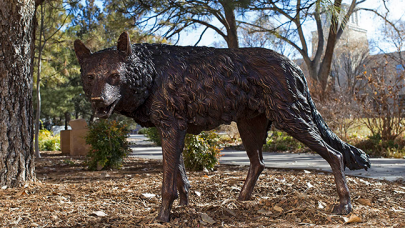Aug. 6, 2020 — The U.S. Department of Energy’s (DOE) Advanced Scientific Computing Research (ASCR) Leadership Computing Challenge (ALCC) has awarded 24 projects a total of 5.74 million node hours at the Argonne Leadership Computing Facility (ALCF) to pursue challenging, high-risk, high-payoff simulations.
Each year, the ASCR program, which manages some of the world’s most powerful supercomputing facilities, selects ALCC projects in areas that aim to further DOE mission science and broaden the community of researchers capable of using leadership computing resources.

The ALCC program allocates computational resources at ASCR’s supercomputing facilities to research scientists in industry, academia, and national laboratories. In addition to the ALCF, ASCR’s supercomputing facilities include the Oak Ridge Leadership Computing Facility (OLCF) at Oak Ridge National Laboratory and the National Energy Research Scientific Computing Center (NERSC) at Lawrence Berkeley National Laboratory. The ALCF, OLCF, and NERSC are DOE Office of Science User Facilities.
The 24 projects awarded time on the ALCF’s Theta supercomputer are listed below. Some projects received additional computing time at OLCF and/or NERSC (see the full list of awards here). The one-year awards began on July 1.
- Katerina Antypas from Lawrence Berkeley National Laboratory received 100,000 node hours for “Enabling Resilient and Portable Workflows from DOE’s Experimental Facilities.”
- Douglas Benjamin from Argonne National Laboratory received 950,000 node hours for “High-Luminosity LHC Detector Upgrade Studies by the ATLAS and CMS Collaborations.”
- Igor Bolotnov from North Carolina State University received 192,000 node hours for “Multiphase Flow Simulations of Reactor Flows.”
- Duc Cao from the Laboratory for Laser Energetics received 318,000 node hours for “Improving Direct-Drive Laser Fusion Predictive Capability with a Simulation Database.”
- Jacqueline Cole from University of Cambridge received 100,000 node hours for “Data-Driven Molecular Engineering of Advanced Functional Materials.”
- Darin Comeau from Los Alamos National Laboratory received 400,000 node hours for “Variable-Resolution Earth System Modeling of the Cryosphere with E3SM.”
- Sean Dettrick from TAE Technologies received 64,000 node hours for “FRC Stability and Transport.”
- Ming Du from Argonne National Laboratory’s Advanced Photon Source received 250,000 node hours for “Distributed Large Wavefield Propagation and 3D Reconstruction beyond the Depth of Focus Limit.”
- Olle Heinonen from Argonne National Laboratory received 100,000 node hours for “Benchmarking Many-Body Perturbation Theory.”
- Olexandr Isayev from Carnegie Mellon University received 350,000 node hours for “Interpretable Machine Learning Force Fields for Accurate Chemical Reactive Dynamics.”
- Ahren Jasper from Argonne National Laboratory received 100,000 node hours for “Stochastic A Priori Dynamics for Complex Reactive Chemical Environments.”
- Andreas Kronfeld from Fermi National Accelerator Laboratory received 200,000 node hours for “Nucleon Axial Charge with All-Staggered Lattice QCD.”
- Noa Marom from Carnegie Mellon University received 100,000 node hours for “Many-Body Perturbation Theory Meets Machine Learning to Discover Materials for Organic Photovoltaics.”
- Mark Messner from Argonne National Laboratory received 200,000 node hours for “High-Temperature Material Properties from First Principles.”
- Joshua New from Oak Ridge National Laboratory received 300,000 node hours for “Automatic Building Energy Modeling.”
- Maria Piarulli from Washington University in St. Louis received 200,000 node-hours for “Chiral Nuclear Interactions from Nuclei to Nucleonic Matter.”
- Emilian Popov from Oak Ridge National Laboratory received 220,000 node hours for “DNS Simulations of Coolant Flow in the High-Flux Isotope Reactor.”
- Igor Rakhno from Fermi National Accelerator Laboratory received 450,000 node hours for “Optimization Studies of the LBNF – PIP-II Complex for Megawatt Beams on Target.”
- Dongwon Shin from Oak Ridge National Laboratory received 100,000 node hours for “Supercomputing for Automotive High-Temperature Alloy Design.”
- Joern Siepmann from University of Minnesota received 220,000 node hours for “Predictive Modeling of Nanoporous Materials and Multiphase Systems.”
- Lynda Soderholm from Argonne National Laboratory received 100,000 node hours for “Understanding the Role of Hierarchical Correlations in Solution-Phase Chemical Separations.”
- Andrzej Szelc from University of Manchester received 200,000 node hours for “Reconstructing Neutrino Data with the MicroBooNE Liquid Argon Detector.”
- Brian Wirth from University of Tennessee received 318,000 node hours for “Plasma Surface Interaction Modeling.”
- Yiqi Yu from Argonne National Laboratory received 208,000 node hours for “Toward the Future: High-Fidelity Simulation for Next-Generation Nuclear Reactors.”
About The Argonne Leadership Computing Facility
The Argonne Leadership Computing Facility provides supercomputing capabilities to the scientific and engineering community to advance fundamental discovery and understanding in a broad range of disciplines. Supported by the U.S. Department of Energy’s (DOE’s) Office of Science, Advanced Scientific Computing Research (ASCR) program, the ALCF is one of two DOE Leadership Computing Facilities in the nation dedicated to open science.
About the Argonne National Laboratory
Argonne National Laboratory seeks solutions to pressing national problems in science and technology. The nation’s first national laboratory, Argonne conducts leading-edge basic and applied scientific research in virtually every scientific discipline. Argonne researchers work closely with researchers from hundreds of companies, universities, and federal, state and municipal agencies to help them solve their specific problems, advance America’s scientific leadership and prepare the nation for a better future. With employees from more than 60 nations, Argonne is managed by UChicago Argonne, LLC for the U.S. Department of Energy’s Office of Science.
About The U.S. Department of Energy’s Office of Science
The U.S. Department of Energy’s Office of Science is the single largest supporter of basic research in the physical sciences in the United States and is working to address some of the most pressing challenges of our time. For more information, visit https://energy.gov/science
Source: Nils Heinonen, Argonne Leadership Computing Facility




























































